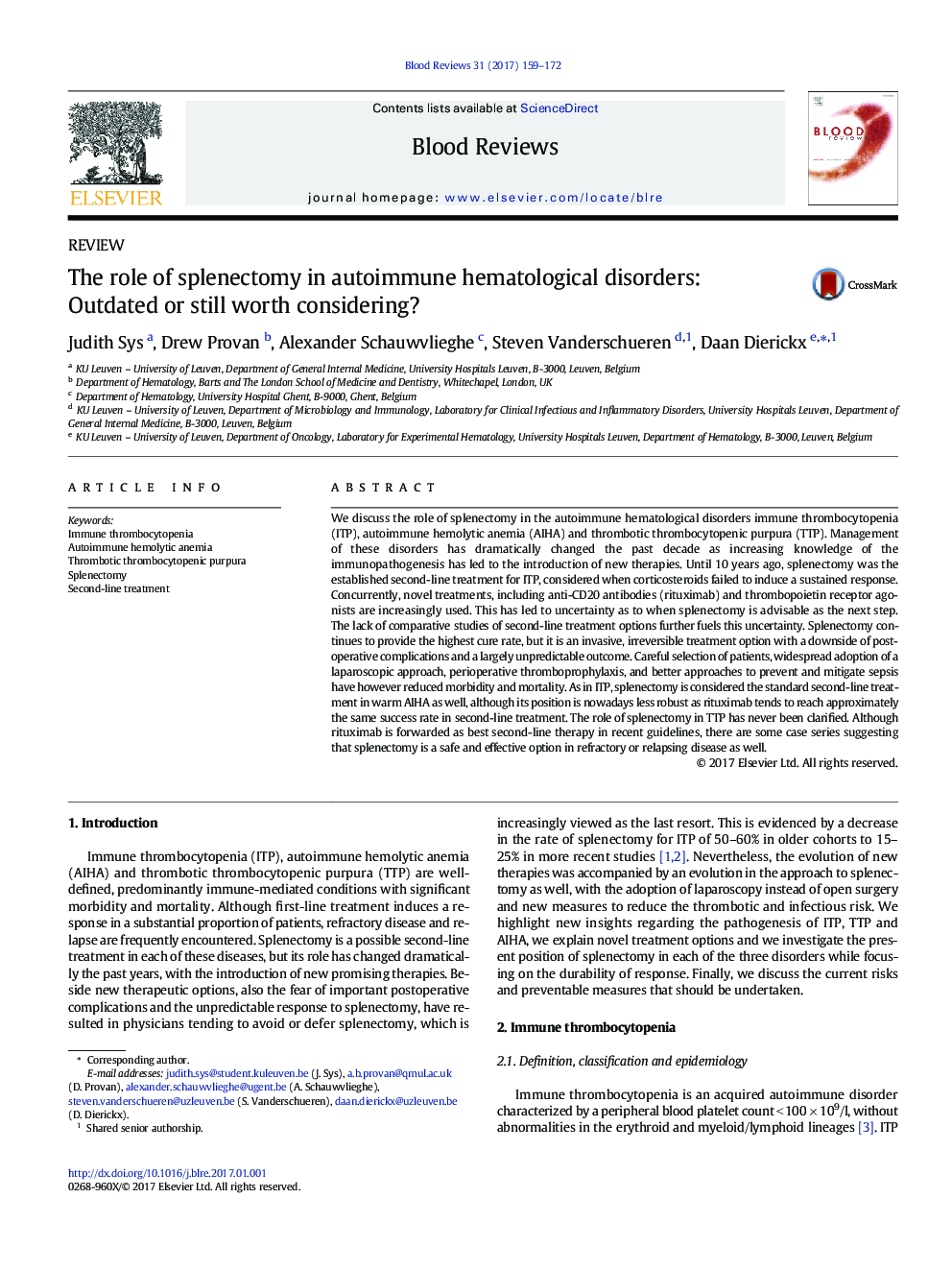| Article ID | Journal | Published Year | Pages | File Type |
|---|---|---|---|---|
| 5524714 | Blood Reviews | 2017 | 14 Pages |
We discuss the role of splenectomy in the autoimmune hematological disorders immune thrombocytopenia (ITP), autoimmune hemolytic anemia (AIHA) and thrombotic thrombocytopenic purpura (TTP). Management of these disorders has dramatically changed the past decade as increasing knowledge of the immunopathogenesis has led to the introduction of new therapies. Until 10Â years ago, splenectomy was the established second-line treatment for ITP, considered when corticosteroids failed to induce a sustained response. Concurrently, novel treatments, including anti-CD20 antibodies (rituximab) and thrombopoietin receptor agonists are increasingly used. This has led to uncertainty as to when splenectomy is advisable as the next step. The lack of comparative studies of second-line treatment options further fuels this uncertainty. Splenectomy continues to provide the highest cure rate, but it is an invasive, irreversible treatment option with a downside of postoperative complications and a largely unpredictable outcome. Careful selection of patients, widespread adoption of a laparoscopic approach, perioperative thromboprophylaxis, and better approaches to prevent and mitigate sepsis have however reduced morbidity and mortality. As in ITP, splenectomy is considered the standard second-line treatment in warm AIHA as well, although its position is nowadays less robust as rituximab tends to reach approximately the same success rate in second-line treatment. The role of splenectomy in TTP has never been clarified. Although rituximab is forwarded as best second-line therapy in recent guidelines, there are some case series suggesting that splenectomy is a safe and effective option in refractory or relapsing disease as well.
